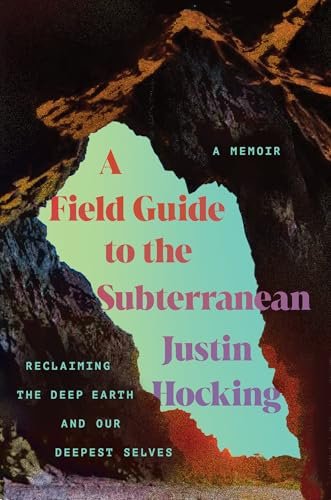Uncovering Depths: A Review of A Field Guide to the Subterranean: Reclaiming the Deep
If you’ve ever found yourself drawn to the hidden stories beneath the surface—be they in the earth, the mind, or the heart—then Justin Hocking’s A Field Guide to the Subterranean: Reclaiming the Deep will resonate deeply. The title alone evokes a sense of exploration, calling to mind the caverns of our experiences, both personal and collective. Hocking, already acclaimed for The Great Floodgates of the Wonderworld, takes us on a journey that intertwines his life with the geology of his Colorado upbringing, where underground nuclear tests and mining shaped both the landscape and, metaphorically, his own history.
Hocking’s memoir is not a straightforward account; it’s an excavation—a meticulous unearthing of family traumas, societal expectations of masculinity, and an authentic reckoning with the natural world. His narrative spans everything from the stark realities of mining history to the tender complexities of personal relationships. Through the lens of his life, he grapples with crucial questions: How can we transform trauma into compassion for each other and the landscapes we inhabit? How do we move beyond the archetype of the rugged American male, too often steeped in exploitation?
What struck me most was Hocking’s ability to weave so many themes together; it’s a kaleidoscopic journey that defies simple categorization. One moment, he’s detailing an intense encounter with the geothermal wonders of hot springs, and the next, he dives into a heartfelt reflection on masculinity and its ties to violence. His prose is rich and evocative, painting vivid scenes that felt incredibly immersive. It reminded me of the way we sometimes overlook the quiet stories lying just beneath our feet, yet Hocking brings them to life with such clarity.
One particular quote that lingered with me was, “To reclaim the past is to lay the groundwork for the future.” This perspective encapsulates Hocking’s essence in the book: a reliance on history to foster hope and deeper connections with both people and nature. His reflections on labor rights and ecological awareness made me ponder my own relationship with the environment and the implicit responsibilities we all share.
In terms of style, Hocking balances lyrical descriptions with moments of raw honesty that keep the pacing dynamic. He invites readers into both expansive vistas and intimate spaces, whether they be remote caves or the warmth of a family home. The way he writes about skateboarding, for instance, serves as a medium for self-discovery, echoing the very essence of freedom and exploration that permeates throughout the memoir.
Field Guide to the Subterranean is essential reading for anyone concerned with the intersection of personal identity and environmental consciousness. It’s for those who, like Hocking, understand the importance of reclaiming not just our pasts, but our futures amid a world so often defined by exploitation.
In closing, I found this book to be a transformative experience—a reminder of the healing that comes from unearthing our deepest stories and examining our connections to the land and each other. Whether you’re a lover of memoirs, nature writing, or simply seeking meaning in a world laden with complexities, this book offers profound insights. So take a deep breath, prepare to dig into your own subterranean layers, and allow Hocking’s journey to inspire yours.
Discover more about A Field Guide to the Subterranean: Reclaiming the Deep … on GoodReads >>







